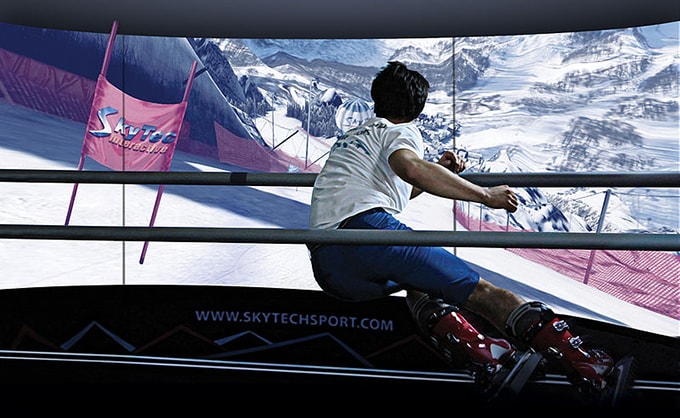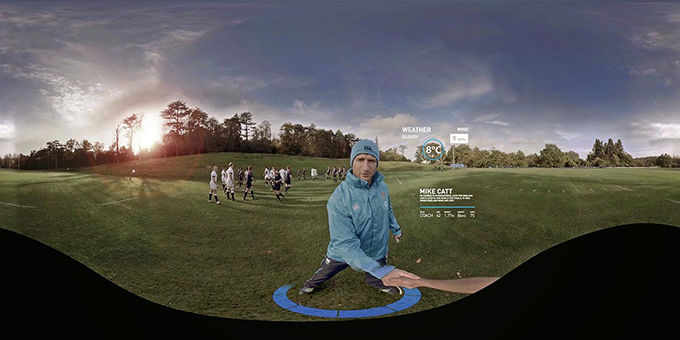Search the latest and greatest job opportunities in sport

Virtual reality will be big news when its implementation becomes available for all pockets and professional teams. The industry expects to exceed $120bn in revenue in 2020.
It sounds like science fiction, but it is not. Virtual reality has found applications for improving athletes’ performance. It is no longer necessary to go to the golf course to improve your swing technique or be on a basketball court to practice shooting as many times as you need. The practice of repetition is the oldest method for improving individual technique. Virtual reality makes it possible for an athlete to train in ‘real’ conditions simply by connecting to a machine, and the data it collects is so accurate that it allows you to compare your results and perfect your technique.
Shaving a few milliseconds off the clock, having a better vision of the game, anticipating your opponent’s actions, improving your individual technique, ‘being’ in your place of training without leaving your home, attending a sporting event on the other side of the planet without having to catch a plane, experiencing a game from the bench of your favorite team … All this is already possible thanks to virtual reality.
Teska Dinkla, a golf player and student of the Master in Sport Management at the Johan Cruyff Institute Amsterdam , is a regular user of virtual reality, which she says represents no less than “75% of my training routine”. Teska uses Trackman , which is “a very precise machine that consists of a dual radar system that collects and analyzes data so that it is very easy to understand your movements in relation to the numbers. I would say that it’s like a personal trainer when I work alone. Undoubtedly, virtual reality helps you to make your workouts more effective and, therefore, make better use of the time you spend training. As it is a device used by golfers around the world, you can compare yourself with them, extract the data and compete in a very competitive environment”.

Photo: ‘Wear the Rose’ – the first fully immersive 360-degree virtual reality sports experience
Coaches have traditionally used video sessions to prepare for future matches or to show their players the mistakes they have made, but virtual reality can show much more: it enables you to analyze and optimize an athlete’s performance to levels that were unthinkable until recently. It allows you to visualize a game before playing it – not in front of the television, but on the field of play. Taking advantage of the data of the movements of the players and the previously analyzed plays of the opposing team, players are able to see, thanks to the 3D simulator, all the tactical possibilities and face a virtual rival days before the game.
Athletes are very keen to have a virtual reality device that would be very helpful for perfecting their technique in their sport. Anna Prat , a student of the Master in Sport Management in Barcelona and a trampoline jumper , says: “I think it is a very new tool that is, for now, only available to a few. Virtual reality would be very useful for working on real sensations in specific moments, like the pressure in competitions, fear of height, orientation in the air in a jump that you have never tried, etc. We currently use visualization technique a lot, but you have to imagine it. With virtual reality, you could see it with your own eyes!”

Photo: Gatorade – Bryce Harper Virtual Reality
Visualization is the function that Jennifer Pareja , also a student of the Master in Sport Management at the Johan Cruyff Institute Barcelona , most values about virtual reality. Jennifer, silver medalist in water polo at the London Olympics and gold at the 2013 World Cup, believes that it would be very interesting to be able to simulate games with different options and that the player can make decisions and see how they affect the game. “I have used external cameras to study technique and biomechanical movements,” she says, “but an external camera does not allow you to analyze the direction, force or spin of the ball when thrown. A virtual reality device inside the water would be a very big advance”.
The sports industry continually incorporates new advances in technology and has long been connected to ‘big data’. Technical improvements are no longer understood without an exhaustive analysis of the data. There is a phrase that most athletes prefer not to hear: “You are only as good as your last result.” But, hard as it may seem, that’s the reality. The other, virtual reality, is proving to be one of the ways to keep improving.
Cover photo: Wikimedia Commons
This article was originally published by our partner, the Johan Cruyff Institute, in their digital magazine .
Give your career in sport a boost with the latest live vacancies , or create an account today and stay up to date with all the latest industry knowledge, events and jobs in sport.
Search the latest and greatest job opportunities in sport
In the world of professional sports, sponsorship represents a significant source of revenue and plays a vital role for t...
Read moreThe sports industry is a vibrant and multifaceted industry, made up of a diverse range of sectors that shape its global ...
Read morePablo Romero, director of protocol at Sevilla FC and lecturer in the UCAM Master's Degree in Sports Management, shares t...
Read more